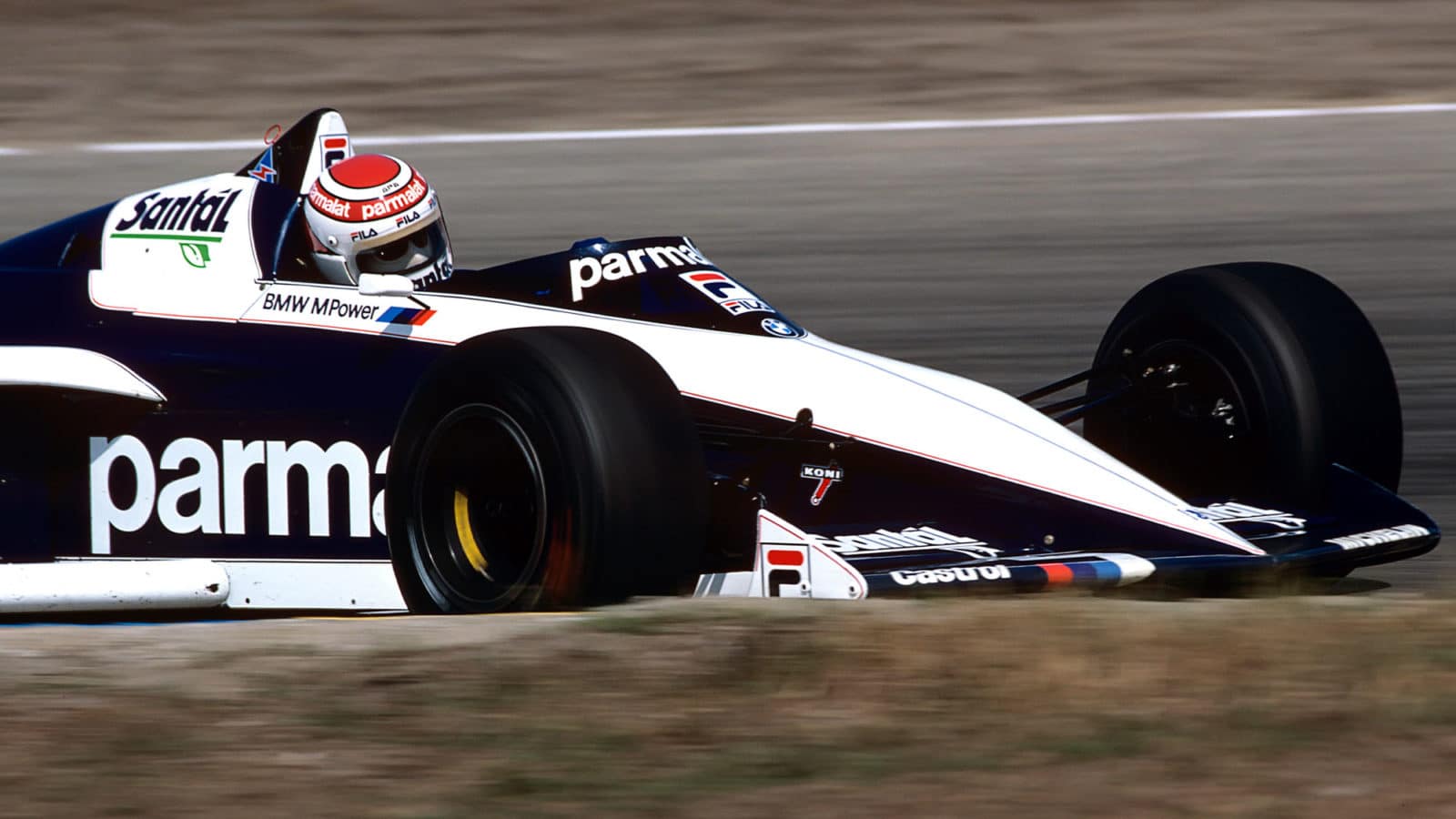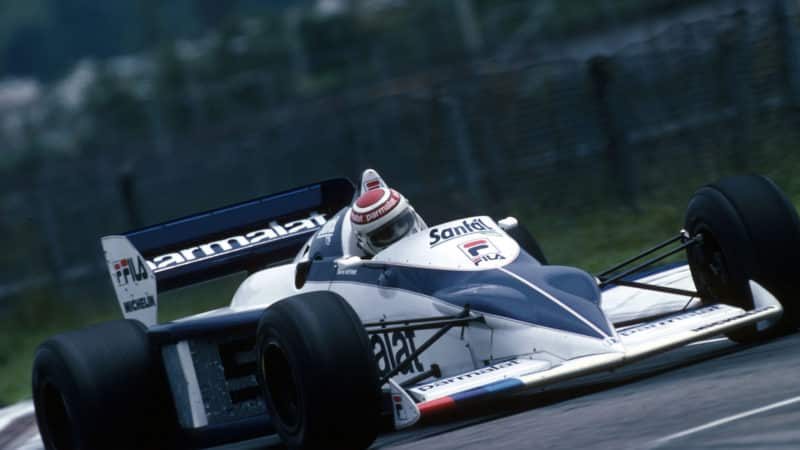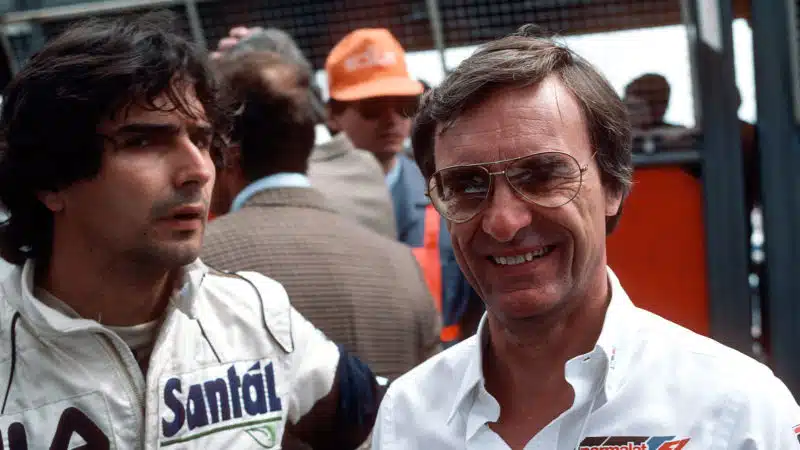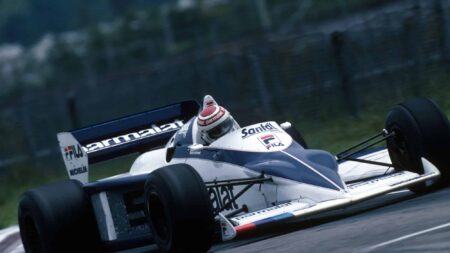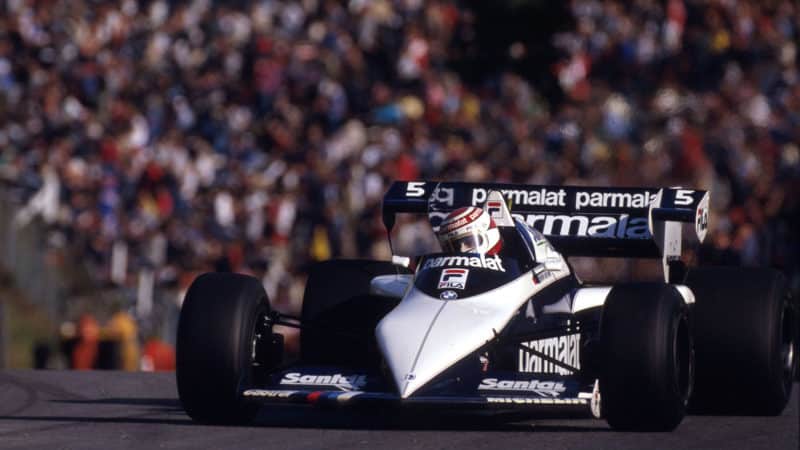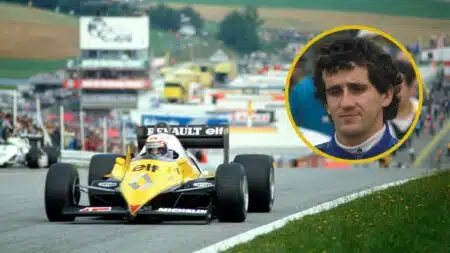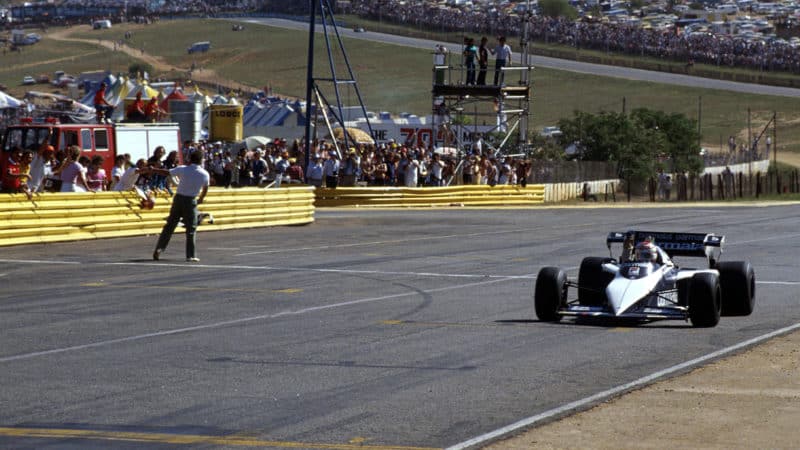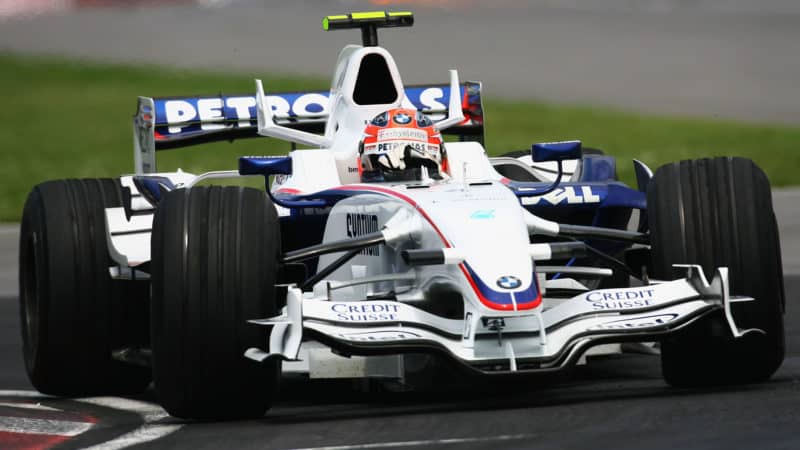“A lot of people got upset with Nelson, because he was the driving force behind the strike with Niki Lauda,” said Stappert. “I didn’t know Nelson as well then as I would later, but I was sure there must have been a serious reason which at that moment I didn’t understand. I took all my courage in my hands and went up to Bernie and told him the same. Right there in the pitlane, our racing partner screamed at me as though I was a little boy. It made me feel so sick that I just turned around and left.”
After some more histrionics from Ecclestone, who at first refused to let Nelson practise on day two of qualifying, the new Brabham-BMW BT50 only just missed pole position. “The engine characteristics were still rudimentary,” confessed Stappert, “and although that car was very quick on the straight, you really needed someone brave to drive it. In the race, Nelson made a mess of the start. Trying to catch up, he missed the braking point at the end of the straight and slid straight on.”
Nelson and his German/Dutch girlfriend Sylvia Tamsma (in 1985 she gave birth to ‘young’ Nelson) spent a week with Stappert in Austria at the ski World Championships on their return from Kyalami, and a lasting friendship was established. The genial but practical Stappert found a great ally in Piquet, who was as dedicated to making the BMW turbo a success as anyone in the engine shop. They both wanted to test and race the new car intensively, to speed up progress. But Ecclestone had a sponsor, Parmalat, to placate. He wanted BMW to withdraw the turbo in Brazil and Long Beach, the next two races, and cleverly he managed to outwit Stappert at a lunch he arranged with Hans-Erdmann Schönbeck, one of BMW’s board members, soon after the team returned from South Africa.
Stappert: “Bernie issued a press release saying that the engine was too strong and Brabham needed to improve their brakes, etc. That was all bullshit. We continued testing but we always had trouble with the electronic management. Then there was a test in April at Zolder. Bosch had four or five different boxes, and all five of them worked. Nelson would do five laps, everything was OK, then five more with another box.
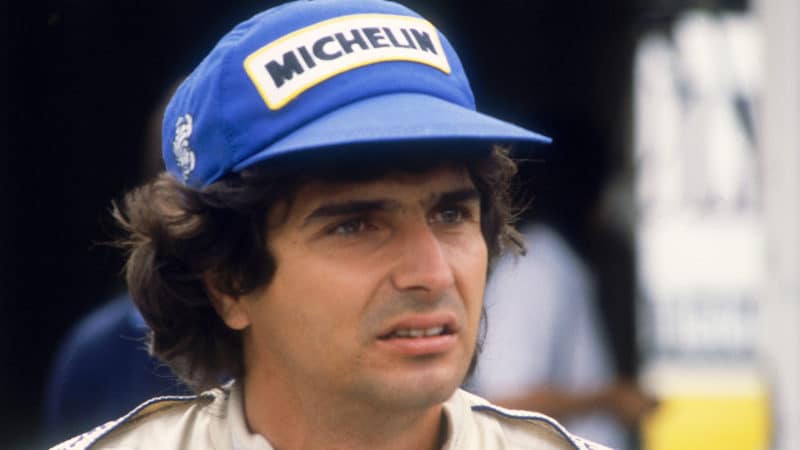
Piquet was dedicated to solving BMW issues despite teething troubles
Getty Images
“After the test in Zolder Nelson called Bernie from the little office in the pitlane. They were shouting at each other, apparently because Bernie wanted to discourage Nelson from running the turbo. But Nelson insisted that he wanted to use the turbo for racing, starting at the next GP, which would mean splitting the team by using different engines for each driver. He came out of the office and immediately told our engine chief Paul Rosche and me, ‘listen, I’m prepared to stick my neck out with Bernie, but I now rely on you to convince your BMW board to run only the one turbo car for me.’
“The funny sequel to this took place the day after I got back to Munich from the test, only a few minutes after I had persuaded Herr Schönbeck to agree to Nelson’s proposal. I was still in Schönbeck’s office when Bernie rang, and Schönbeck switched on the loudspeaker so I could hear what was being said. I couldn’t believe my ears as I listened to Bernie telling Schönbeck that he personally had managed to persuade Nelson to run just one engine.”
With most of the leading teams in direct confrontation with the FIA president, garrulous Frenchman Jean-Marie Balestre, over car regulations (sound familiar?), off-track politics threatened to destroy the 1982 season. Piquet had won the Brazilian GP in March, driving a Cosworth-engined car, but was disqualified (in favour, yes, of a French Renault) when Murray’s ingenious but infamous water-cooled braking system was ruled illegal. Ten teams, predominantly British, then boycotted the first race of the European season. Although Piquet’s BWW-powered car made a low-key return (fifth place) at the Belgian GP, the patience of the BMW board was being stretched very thin.
At Detroit in June, the decision to run only one BMW-engined car seemed to have gone horribly wrong when Piquet failed to qualify. “That was partly our fault,” confessed Stappert, “because the engine stopped on the far side of the circuit, and by the time he got back to the pits qualifying was over. The next day it was pouring with rain… Gordon Murray was completely flattened. He couldn’t believe that one of his cars hadn’t qualified. He insisted that the only way to go was to stop racing the turbo and go back to intensive testing.
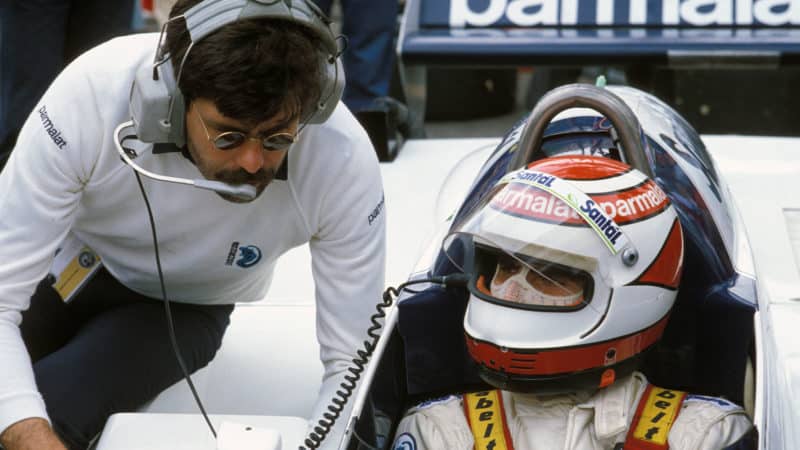
Gordon was “flattened” by Piquet’s failure to qualify at Detroit ’82
Grand Prix Photo
I said, ‘No, Gordon, this is not possible. The board will not accept it. We have to race in Montréal in one week’s time.’”
After a series of threats and counter-bluffs, Murray agreed to Stappert’s pleadings. With the BMW sounding tremendous, Piquet went into the lead from René Arnoux’s Renault after eight laps. Stappert was on cloud nine. “For me, the world could have ended there and then: after the hard time we’d been given in Detroit, we had shown the people back home in Germany that we had a competitive combination.”
Stappert got a big shock 10 laps from the end of the race when Ecclestone started to gather his things together in readiness to go to the airport for the evening flight home to London. Nelson was leading, but Patrese in the Ford car was not too far behind in second place. Stappert couldn’t believe that even Ecclestone would walk away from a race that his drivers were about to win in one-two order. “Feeling a bit helpless, I said, ‘but what do I do if Patrese catches Nelson and they start fighting for the lead?’ He just turned round and said, ‘Do what you like!’”
“I’d done all the development on that car, no f***ing way was he going to win” Nelson Piquet
Inside the car, Piquet was in serious pain. “For that race the guys had done a lot of modifications, including an extra radiator in the nose of the car, which produced lots of heat which came straight back onto my feet. We should never have won – in fact it wasn’t BMW who won the race, it was me, because I did 72 laps with my feet completely burned.
“I didn’t stop because Patrese was behind me in the Ford car. I told myself there was no way I would stop, I’d done all the development on that car, no f***ing way was he going to win.”
Coming at a moment when BMW was ready to quit F1 racing, the Canadian victory saved a situation which had seemed lost. The BMW board agreed to continue signing cheques and the Brabham crew breathed a sigh of relief. However, a string of mishaps and mechanical failures prevented Nelson from finishing six of the remaining eight races of the 1982 season. It wouldn’t be until ’83 that BMW could celebrate the World Championship.
